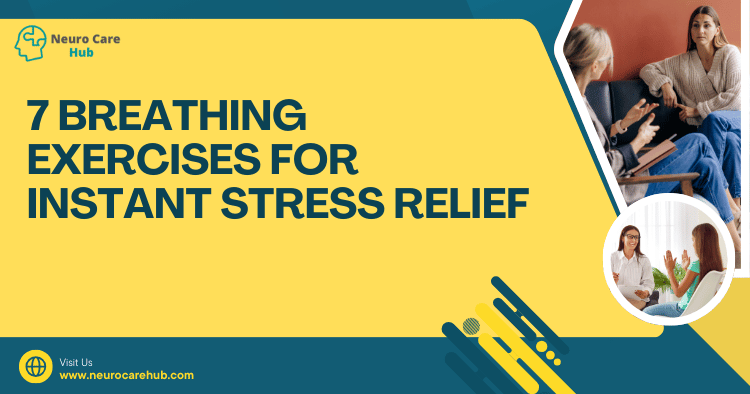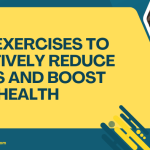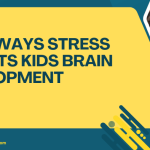Table of Contents
- Introduction
- The Science Behind Breathing and Stress
- 1. Deep Breathing
- 2. Box Breathing
- 3. 4-7-8 Breathing
- 4. Alternate Nostril Breathing
- 5. Diaphragmatic Breathing
- 6. Pursed Lip Breathing
- 7. Visualization Breathing
- Conclusion
- FAQs
Introduction
In today’s fast-paced world, stress can feel like an unwelcome companion. Thankfully, there’s a powerful tool at your disposal: your breath. Breathing exercises not only provide immediate relief from stress but also enhance your overall well-being. In this article, we’ll explore seven effective breathing techniques that you can practice anytime, anywhere.
Stress is a common experience, but it doesn’t have to control your life.
The Science Behind Breathing and Stress
Before we dive into the exercises, it’s crucial to understand the science behind them. Stress activates your body’s “fight or flight” response, which can lead to shallow breathing. When you practice controlled breathing, you engage your parasympathetic nervous system, which promotes relaxation and counteracts the stress response. Research shows that mindful breathing can lower cortisol levels, reduce anxiety, and improve focus. For comprehensive insights on how stress impacts brain health, consider exploring Top 5 Ways Stress Impacts Memory & Learning Ability and Top 5 Ways Stress Affects Your Nervous System.
“Mindful breathing is a simple yet effective way to reclaim your calm.”
1. Deep Breathing
Deep breathing is one of the simplest and most effective stress-relief techniques.
How to Do It:
- Find a comfortable position, either sitting or lying down.
- Place one hand on your chest and the other on your abdomen.
- Inhale deeply through your nose for a count of four, feeling your abdomen rise.
- Hold your breath for a count of four.
- Exhale slowly through your mouth for a count of six.
Benefits:
- Reduces anxiety
- Improves oxygen flow
- Increases mindfulness
“Take a moment to breathe deeply; it’s the easiest way to reconnect with yourself.”
2. Box Breathing
Box breathing, also known as square breathing, is ideal for calming the mind and enhancing focus.
How to Do It:
- Inhale through your nose for a count of four.
- Hold your breath for four counts.
- Exhale through your mouth for four counts.
- Hold for another four counts.
- Repeat for several cycles.
Benefits:
- Increases concentration
- Reduces stress levels
- Improves emotional regulation
“Box breathing creates a rhythm that can anchor your thoughts and emotions.”
3. 4-7-8 Breathing
Developed by Dr. Andrew Weil, the 4-7-8 technique is perfect for those struggling with insomnia or racing thoughts.
How to Do It:
- Sit or lie down comfortably.
- Inhale quietly through your nose for a count of four.
- Hold the breath for a count of seven.
- Exhale completely through your mouth for a count of eight.
- Repeat the cycle four times.
Benefits:
- Promotes relaxation
- Helps with sleep
- Reduces anxiety
“This technique not only calms the mind but can also help you drift into a restful sleep.”
4. Alternate Nostril Breathing
This yogic practice balances both hemispheres of the brain, leading to enhanced mental clarity.
How to Do It:
- Sit comfortably and close your right nostril with your thumb.
- Inhale deeply through your left nostril.
- Close your left nostril with your ring finger, then open your right nostril.
- Exhale through the right nostril.
- Inhale through the right nostril, close it, and exhale through the left.
- Repeat for several cycles.
Benefits:
- Reduces anxiety
- Enhances focus
- Promotes emotional balance
“Balancing your breath can lead to a more balanced mind.”
5. Diaphragmatic Breathing
This technique encourages full oxygen exchange and is excellent for reducing stress.
How to Do It:
- Lie on your back with your knees bent or sit comfortably.
- Place one hand on your chest and the other on your belly.
- Inhale deeply through your nose, allowing your diaphragm to expand (your belly should rise, not your chest).
- Exhale slowly through your mouth.
- Repeat for several minutes.
Benefits:
- Reduces tension
- Increases lung capacity
- Promotes a sense of calm
“Diaphragmatic breathing is a fundamental practice for stress management.”
6. Pursed Lip Breathing
This technique is particularly beneficial for those with respiratory issues, but anyone can benefit from it.
How to Do It:
- Inhale slowly through your nose for a count of two.
- Pucker your lips as if you’re about to blow out a candle.
- Exhale slowly and gently through your pursed lips for a count of four.
Benefits:
- Improves breathing efficiency
- Promotes relaxation
- Helps clear airways
“Pursed lip breathing can be a game-changer for managing breathlessness.”
7. Visualization Breathing
Combining imagery with breath can enhance relaxation and reduce stress.
How to Do It:
- Find a quiet space and close your eyes.
- Take a few deep breaths to center yourself.
- As you inhale, visualize a calming scene (like a beach or forest).
- As you exhale, imagine releasing tension or negative energy.
- Continue for several minutes.
Benefits:
- Enhances relaxation
- Increases mindfulness
- Improves emotional well-being
“Visualization can transform your breathing practice into a journey of tranquility.”
Conclusion
Incorporating these breathing exercises into your daily routine can yield significant benefits for your mental and emotional health. Whether you’re at work, home, or on the go, these techniques are simple to perform and offer instant relief from stress. Remember, the key is consistency—practice these exercises regularly to experience long-term benefits. For more insights on enhancing mental health through various techniques, check out Top 5 Tips for Managing Stress.
“Investing time in your breath is investing time in your well-being.”
FAQs
Q: How long should I practice these exercises?
A: Start with 5-10 minutes daily. As you become more comfortable, you can extend your practice.
“Consistency is key to reaping the benefits of breathing exercises.”
Q: Can these exercises help with anxiety?
A: Yes, many of these techniques are effective in managing anxiety and promoting relaxation.
Q: Is it normal to feel lightheaded after breathing exercises?
A: Some people may feel lightheaded, especially if they are new to deep breathing. Take breaks as needed and ensure you’re breathing comfortably.
Q: How quickly can I expect to feel the effects?
A: Many people report feeling calmer and more centered within minutes of practicing these exercises.
“Take charge of your stress; your breath is your best ally.”
By incorporating these exercises into your daily life, you can take charge of your stress and promote a healthier, happier you. Happy breathing!






